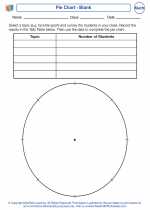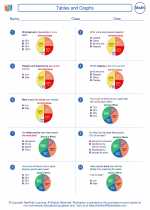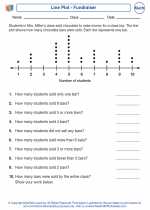What are Axes in Math?
In mathematics, the term "axes" typically refers to the reference lines used in a coordinate system. These lines are used to locate and describe the positions of points in a plane or in space. The most common types of axes are the x-axis and the y-axis, which form a coordinate plane.The X-Axis
The x-axis is the horizontal reference line in a coordinate system. It runs from left to right and is used to measure the horizontal position of a point.The Y-Axis
The y-axis is the vertical reference line in a coordinate system. It runs from bottom to top and is used to measure the vertical position of a point.Coordinate Plane
When the x-axis and y-axis are combined, they form a coordinate plane. This plane is divided into four quadrants labeled as I, II, III, and IV. The intersection of the x-axis and y-axis is called the origin and is denoted as (0, 0).Study Guide
To understand and master the concept of axes in math, here are some key points to remember:- The x-axis is the horizontal reference line, while the y-axis is the vertical reference line.
- The point where the x-axis and y-axis intersect is called the origin and is denoted as (0, 0).
- The coordinate plane is divided into four quadrants, labeled as I, II, III, and IV.
- Points on the coordinate plane are represented by ordered pairs (x, y), where x is the horizontal position and y is the vertical position.
- Positive values of x are to the right of the y-axis, while negative values of x are to the left. Similarly, positive values of y are above the x-axis, and negative values of y are below.
◂Math Worksheets and Study Guides Fourth Grade. Tables and Graphs
Study Guide Tables and Graphs
Tables and Graphs  Activity Lesson
Activity Lesson Pie Chart - Blank
Pie Chart - Blank  Activity Lesson
Activity Lesson Classroom Chaos
Classroom Chaos  Activity Lesson
Activity Lesson Mary`s Many Movements
Mary`s Many Movements  Worksheet/Answer key
Worksheet/Answer key Tables and Graphs
Tables and Graphs  Worksheet/Answer key
Worksheet/Answer key Tables and Graphs
Tables and Graphs  Worksheet/Answer key
Worksheet/Answer key Tables and Graphs
Tables and Graphs  Worksheet/Answer key
Worksheet/Answer key Tables and Graphs
Tables and Graphs  Worksheet/Answer key
Worksheet/Answer key Tables and Graphs
Tables and Graphs  Worksheet/Answer key
Worksheet/Answer key Tables and Graphs
Tables and Graphs  Worksheet/Answer key
Worksheet/Answer key Student Pictograph
Student Pictograph  Worksheet/Answer key
Worksheet/Answer key Line Plot - Fundraiser
Line Plot - Fundraiser  Worksheet/Answer key
Worksheet/Answer key Pie Chart - After-School Activities
Pie Chart - After-School Activities 

 Activity Lesson
Activity Lesson
 Activity Lesson
Activity Lesson
 Activity Lesson
Activity Lesson
 Worksheet/Answer key
Worksheet/Answer key
 Worksheet/Answer key
Worksheet/Answer key
 Worksheet/Answer key
Worksheet/Answer key
 Worksheet/Answer key
Worksheet/Answer key
 Worksheet/Answer key
Worksheet/Answer key
 Worksheet/Answer key
Worksheet/Answer key
 Worksheet/Answer key
Worksheet/Answer key
 Worksheet/Answer key
Worksheet/Answer key
 Worksheet/Answer key
Worksheet/Answer key

The resources above cover the following skills:
DATA ANALYSIS
Interpret data displayed in a circle graph.